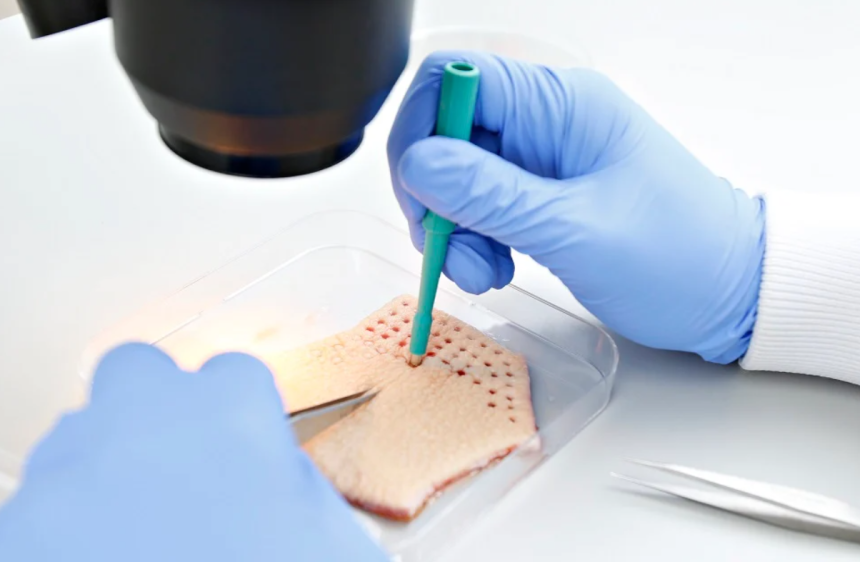Researchers have examined a wide range of peptide formulations to determine efficacy, stability, and implied mechanisms of action. We have summarized a few below:
Growth hormone-releasing peptides like Ipamorelin and CJC-1295 have been researched within the context of weight reduction. Studies suggest these peptides may operate by boosting natural synthesis of growth hormone, increasing caloric burn rates.
Research suggests that peptides for muscle growth such as BPC-157 and TB-500 may stimulate tissue regeneration and increase muscle development. GHK-Cu and Thymosin beta-4 have also been researched with data to support their potential to promote tissue regeneration and accelerate fast healing.
Within the context of reproductive functions, specialists conducted research and evaluations on peptides such as PT-141, suggesting this compound may potentially re-order certain reproductive dysfunctions.
Mechano Growth Factor Peptide
A peptide hormone known as MGF, also called Mechano Growth Factor, is a member of the IGF-1 (insulin-like growth factor) peptide family.
In the most technical terms possible, MGF is a variation of insulin-like growth factor-I that results through alternative splicing. MGF is also sometimes called an isoform of IGF-1 in scientific circles.
When stress is applied to muscle cells, both MGF and IGF-1 will be produced as a reaction from the muscle cells. Following prolonged or significant physical activity, a splice is made in IGF-1, which results in MGF having its distinctive C-terminal peptide. As a result, this kickstarts the process of hypertrophy and tissue development through recuperation.
The statistics imply that age reduces capacity to express MGF.
AOD 9604 Peptide
AOD 9604 is a synthetic fragment of the C-terminus of the growth hormone (HGH), which is found in the range of 176-191. This hexadecapeptide has been speculated to have impacts on metabolic processes. Specifically, it has been suggested to upregulate lipolysis while simultaneously blocking lipogenesis.
Findings imply that the levels of IGF-1 and insulin may be unaffected by AOD 9604, which may ensure that the likelihood of developing glucose intolerance and diabetes is maintained at a minimum.
IGF-1 Peptide
Insulin-like growth factor 1, also known as IGF 1, is a naturally occurring hormone and has a tight connection to the generation of natural growth hormone.
Researchers speculate that IGF 1 may have widespread physiological impact. Researchers speculate that it may stimulate protein production, improve glucose absorption, and maintain positive nitrogen balance. When paired with the appropriate activity, nutrition, and polypharmacology, scientists hypothesize that IGF-1 LR3 may support the proliferation of muscle cells.
TB-500 Peptide
The short peptide known as Thymosin beta-4 exhibits a potential G-actin-sequestering activity. Studies suggest it has been linked to the acceleration of tissue repair and the production of new blood vessels (10).
Research suggests that the naturally occurring peptide LKKTETQ was artificially replicated to create the compound known as TB-500. Within the Thymosin (4) protein, the peptide sequence known as (17)LKKTETQ(23) may serve as the active site, which is important for actin binding, cell migration, and wound healing.
Actin and myosin are examples of contractile filaments, and they are the building blocks of muscle fibers. Because of these filaments, muscles can contract and relax, which improves movement, and they also assist metabolism and cell communication.
Through an increase in the receipt of the protein by the peptide segment (17)LKKTETQ(23), research suggests that TB-500 may stimulate a greater reaction in response to actin. This overexpression may encourage greater cell development and proliferation, tissue repair, and cell migration, notably in keratinocytes and endothelial cells.
Bremelanotide, also known as PT-141.
A synthetic version of the alpha-melanocyte stimulating hormone, known by its generic name, Bremelanotide, is abbreviated as PT-141. Findings imply that it is a powerful agonist of melanocortin receptors that may be found in many parts of the central and peripheral nervous systems. This is proposed due to its structure, similar to those receptors.
Visit Core Peptides for additional information and research peptide procurement.














